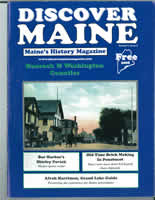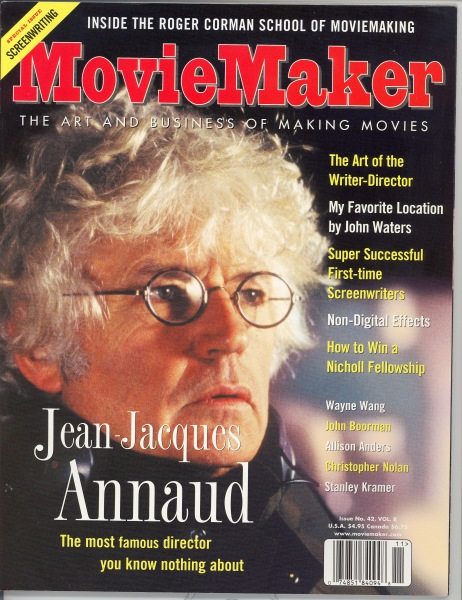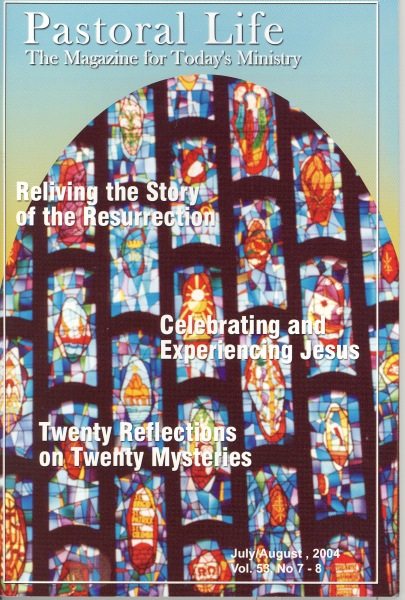War Hero Teaches from the Heart
Bill was the California relative with the biggest laugh, the one with a great appetite for celebration. Although always trim, family members who showed up four times a year to share holidays with huge meals, kidded him for the amount of food he could consume—going back for thirds and fourths. He was the bon vivant, a successful party-shop owner and Disney products salesman. And he was a devoted husband, father and Christian Science reader.
When Bill and his wife Dorothy were going to Europe to celebrate the 40th anniversary of D-Day, a part of Bill’s history surfaced. Bill was a WW II Veteran. His children say that it was after this trip, that Bill was willing to tell his story.
At age 80, he went on a mission to tell junior high and high school students what it was like, up close and personal to land on Omaha Beach and to fight both in both the European and Philippine theaters.
One Spring day, in La Crescenta, California, Bill was due to make his 45th talk, this time to a sophomore history class that was studying World War II. He had to condense his normally two-hour talk into 50 minutes, telling only highlights of his story. A young man named Chris who called him “Uncle Bill” and another strong looking fifteen-year-old named Sam met him at his car to carry up two large boxes of memorabilia.
Bill walked carefully then, but proudly wore his uniform decorated with ribbons and medals too numerous to describe. He carried a large laundry bag filled with weapons. There were no metal detectors in this school and besides he and the boys who helped him were given passes.
The class started at 8:00 AM and the teenagers settled down quickly, eager to meet someone who would bring alive what they were studying in their history books. He gave some basic facts about his life.
“I was born on September 7th, 1923 in Texas. I did three years of ROTC in high school, which proved very helpful to me in my wartime duties. The day after the Pearl Harbor attack I tried to enlist in the Navy, but was rejected because I was colorblind. Later I was drafted and my special vision turned into an asset. After being a drill sergeant at Camp Hood for a year, I became part of the largest convoy to leave New York. We left one day after D-Day on June 7th, 1944.
He told the fifteen and sixteen year-olds about what it was like to land on Omaha beach in a terrible storm where the barges that had been sent over from England to enable the tanks to land had disintegrated. The tanks had orders to land on the beach, but only three out of that envoy were able to land. The others drowned—so many of his buddies and fellow soldiers died in a very short time. Bill choked up and bowed his head to recover.
Next, there was another terrible barrier. They had 182 tanks blown up in one day, and Bill and his comrades were in the only surviving tank in his company, going alone into places he’d never been before.
He told about blowing up a German train’s engine to stop it literally in its tracks, then boarding the train and asking an SS Colonel in a black coat with shiny silver buttons for his knife. “Nein Nein,” said the Colonel. “Ya ya,” said Bill holding a gun to the man’s head. The Colonel relinquished the knife to twenty-year old Bill who walked off the train with dignity. In safety, he and his tank mates looked at the knife. It was engraved with “Germany Forever” written in German and inscribed with the SS symbol. The knife is now worth $9000, Bill said.
The classroom draws in its collective breath, very curious to see it. The knife got carefully passed around in one direction, a bag of sand from the Omaha Beach in Normandy in another. One girl held the bag of sand gently and passed it on with surprising reverence. A big athletic-looking fellow commented aloud on the weight of Bill’s tank hard-hat that doubled for a stool, and in which one could cook. “Dude, this is heavy!” he said and some students snicker. Bill nodded and smiled.
Bill told about the spirit of cooperation between the five tank personnel, living 24/7 in a tank for weeks at a time. They lived on rations and took turns sleeping in very short time increments. They lived in constant danger.
Bill relayed how scared he and the other four men in his tank were when the crossed over the border from France into Germany, fearing that the bridge they just crossed would be blown up and they would be stranded in enemy territory.
He told about how he was injured twice. The first time his leg was nearly blown off and they held it together as they transported him. On the stretcher Bill prayed and prayed. By the time they got him to a makeshift hospital, the doctor pulled off his blanket and said, “there’s nothing wrong with this man.” Bill got up and walked away, a whole man, the recipient of a miracle.
In the classroom that day there were times Bill couldn’t go on, his voice wavering with depth of feeling. He’d stop a few seconds, looking down at his notes and then he’d continue, as he must have continued day and night as a very brave 20 year-old who only knew he had to do the right thing for his country, no matter the cost.
Bill gained strength from his mission to educate people about what war really was like when it was so up-close and personal. When we had won the war, Bill was in the mountains in the Philippines, knowing there were still Japanese around ready to fight. Bill was hiking up a mountain and five Japanese appeared about twenty feet away. Bill rose his gun and took aim. The Japanese very quickly took out their bamboo knives and performed Hari Kari, dying according to their code with honor, by their own hands. Bill told this with tears in his eyes.
This was not a war of distance, of technology, of TV entertainment. This was a war where you saw your fellow human being die, could hear his last breath and where the relief and love ran deep when you and your buddies survived.
Bill often talked for 2 hours at a time on this subject, he said. But that day, after two classes, we gathered his memorabilia and took it to the car.
I took him to a local restaurant in La Canada. It’s a house with a patio garden and trees, a very peaceful place. It was early so only a few patrons sat in the living room or at the tables on the patio. Bill chose outside to take advantage of the mild spring air and sunshine. A man recognizing some of the insignia on Bill’s uniform, some decorations Bill had earned, stood as we approached the table next to his. After we were settled and I went off to get some menus, this man engaged Bill in conversation. Apparently he had served in the infantry in Vietnam.
Towards the end of lunch, the man at the next table came over to say goodbye. But words escaped him. All he could do was salute. Tears sprang to the eyes of both men as Bill silently saluted back.
When we left the patio and were on the way out through the house, an urgent woman’s voice stopped us. “Are you a World War Two veteran, sir?”
We turned and Bill walked back, shaking the woman’s hand and that of her mother. It turned out her Dad had fought in the war, in the Philippines. Bill told the women how he was speaking at the schools, that he’d made over 45 speeches so far. The younger woman said, “We always told Dad to do that, but now he’s gone.” She looked down at her plate.
After a few seconds of silence, I spoke up. “Bill is representing your father in these talks and doing a wonderful job.” She beamed.
That day I got to hold the arm of a veteran. I got to share the table with a person who, despite everything, was still willing to live and love and give. That’s a terrific legacy.
Heide’s Barnyard
Vision into Actuality: How One Woman Made it Happen
By Susan Stroh
Recently I attended a ribbon cutting ceremony: a moving celebration of the renovation of a school’s barnyard. The chair of this undertaking, Heide Boyden, greeted me wearing jeans, tee shirt and a big gardening bonnet. Her eyes were bright in a way I’d never quite seen in the thirteen years she and I were business associates. I had worked with Heide when she was a partner in a video production company. She was a gracious, astute businesswoman who handled people with poise, sophistication and aplomb. It was only after she left her business to have a second baby that I began to suspect the dirt-under-the-nails side of Heide.
First there were the curious phone calls when she’d be exhausted yet elated after hauling debris out of an old barnyard or digging a garden all day. What is this, I thought? I could only picture Heide in her Donna Karan pantsuit. Little by little I learned just how much Heide, now a suburban mother of two, loves to connect with the country. So much so, that if it doesn’t exist, she creates it.
The day of the ceremony, I spoke with parents, teachers as well as the director of Woodland Hills Private School in Southern California. The consensus was that Heide Boyden was heaven-sent when she agreed to chair the project.
The barnyard of the four-acre campus had deteriorated badly over the years. Because it was falling down, it was not in use and the animals were in great need of new digs and TLC. What was urgently needed was someone who could keep a group interested in contributing, over the long haul, towards the realization of an urban “country barnyard”.
Doing what she does best: Heide found, admired and brought out the best in people. She invited contribution by nurturing what a person loves to do and does well naturally.
Heide tells it this way, “Whenever a mom told me she wasn’t creative, I gave her a creative job to do, like painting a mural or designing a stepping stone. The results were awesome.”
As a result every child and nearly every parent in the school has invested a piece of herself in making the vision come true.
After the ribbon cutting festivities were over, I asked Heide to tell me the story of the barnyard. It went like this.
“In 1999, I was new to the school and I accepted the role of chairperson because I thought transforming the sad dilapidated barnyard into a useable one would be enjoyable—and it was!”
“The vision?” I asked.
“We all wanted a clean safe place for the children to interact with animals and a place where they could learn about composting, planting, fertilizing and harvesting. Overall, we wanted the kids to grow excited over nature and see how we humans are part of it.”
I asked Heide, whom I knew as an Emmy-award winning producer, how she came to know so much about farm life.
“In Wisconsin, I grew up with farms all around me. We always had chickens, rabbits, dogs, cats, you name it, and we always gardened. We raised our own food, which gave me a great appreciation for the earth. In fact, my happiest memories are those of stealing things from the garden and eating them when Mom wasn’t looking!”
“Did you learn that from Peter Rabbit?” I asked.
“Of course. No kidding, have you ever bitten into a sun-hot tomato? Because the skin draws taut in the heat, the seeds literally explode in your mouth. It’s the best! Simple pleasures like that is what I wanted kids at our school to enjoy.”
“Even with that farm experience, how did you know where to start?”
“Before my time, an architect Dad had drawn up plans for the reformation. We used that to prioritize and plan the phases of re-building. Then we developed a committee of dedicated parents. The director of the school and totally devoted, could be seen at the barnyard work weekends on her hands and knees taming the gardens with the rest of us.
“And then there was the dad/volunteer whom everyone calls “Mr. Barnyard”. He led the first phase–the clearing phase. For three days, he and his hired hands cleared the land of debris: two and a half semi truckloads of old dilapidated fences, chicken wire and junk.
“At first we didn’t have enough money to replace the shabby plywood back wall of the barnyard, so parents donated paint rollers, brushes and their time. They and their children helped us paint pictures of animals and farm scenes—transforming a questionable wall into a colorful mural—a work of art at no cost!
“Soon we had the means to purchase new rabbit hutches. Then we built a gazebo to protect them from the heat and sun. We named that area ‘Rabbit Run.’
“Next, we turned to the sheep. The Dads built a brand new redwood pen and a Mom painted a sign calling it ‘Shady Sheep Lane’.
“At the same time, Mr. Barnyard led his builders in making an octagonal petting corral dubbed ‘The Petting Paddock.’
“How did you get money for all this?” I asked.
“In some pretty creative ways! One way that continues today is the ‘stepping stone path’. We used rectangular pans for forms and filled them with cement. Families donated $15 to have their child’s handprint and name imbedded in the stone. We’ve made about 500 stones that lead you into the barnyard.
“The Barnyard Committee built, as the money was earned. We next made an enclosure for the Billy goats and then large areas for the ducks, chickens, peacocks and turkeys. Finally we constructed an enclosure for the nanny goats.”
“What were some other fundraising projects?” I asked.
“One mom had an idea to sell the free range chicken eggs to parents and neighbors. Someone donated a refrigerator and children brought empty egg cartons from home. We sold a dozen eggs for $3.00 and made $200-$300 per year with this. And that income will continue as long as the chickens cooperate!
“Another very fun fundraiser was our annual Pumpkin Patch at the school’s Harvest Festival. We bought haystacks and pumpkins en masse. Families not only bought the pumpkins, but also got their kid’s picture taken and framed for about $15 a child. We raised $2000 to $2500 per year from this project.”
Beautiful herb and flower gardens flourish here and there around the school campus. I wanted to know at what point the gardens were built.
“Whenever we could, we gardened. First, we created a composting bin. Then we sent a flyer out to the 200 school families asking their children to bring in their fruit and vegetable garbage. For six months the kids dumped their garbage into the bin! Interested parents on the committee tended the compost heap and by spring we had three raised-bed herb gardens started with our own compost! We also made a bin for red worms, which eat garbage quickly, and to the delight of the kids, we used worm poop for fertilizer! Each child planted herbs of their choice and now we have a lush herb garden that would make Martha Stewart envious.
Other renovation and beautification projects the Barnyard Committee undertook were repainting wooden cutouts of animals to add whimsy to the Barnyard and building a pen for Tara the desert tortoise! A sculptor dad welded a portable chicken coop on wheels. He also hand crafted the beautiful ranch sign that welcomes you to the barnyard.
I asked what difficulties Heide encountered over the years.
“The hardest part was dealing with some misconceptions about proper animal care. We had to teach the kids that animals need space and are on special diets. Kids don’t understand that the fifteen year-old Billy goat shouldn’t eat their favorite frosted animal crackers!”
“What were the greatest triumphs?” I asked.
“Completing something that matters. Now families visit the barnyard with their children before and after school. They take herbs home for cooking. There’s a waiting list for those who wish to gather eggs. The commitment of the group was key: there was never a lack of people who wanted to see the barnyard flourish.
“And your favorite part?” I ask.
“Being part of an honest-to-goodness barn raising!”
SIDEBAR:
Secrets of Successful Fundraising:
- You have to find a cause that you can commit to 100%-one you really believe in.
- Welcome the different ways people feel comfortable contributing: whether it’s money, time, talent, materials or creativity.
- Be able to recognize each individual’s talent, whether they know what it is or not, and bring that out in the person.
- Do fundraisers that are creative and out of the ordinary.
- Keep good records so you know what works and what doesn’t.






